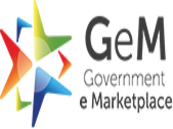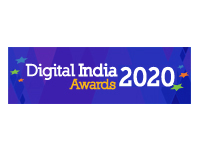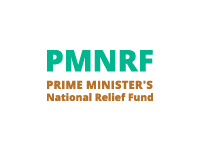Unep Industry and Environment, Paris, France
Linda Spencer
Unep Infoterra Programme Activity Centre, Nairobi, Kenya
Kristinn Sv. Helgason
unep International Environmental Technology Centre, Osaka, Japan
Abstract: To prepare a survey of information systems and sources related to the transfer of environmentally sound technologies for submittal to the Commission on Sustainable Development (CSD) at its meeting in April 1995, UNEP surveyed UN agencies, other international and national agencies, industrial and research organizations, and other groups likely to possess relevant information. The CSD welcomed the work initiated by UNEP. It encouraged UNEP, in conjunction with other UN bodies and relevant organizations, to continue its efforts to include systems from developed and developing countries; analyse information deficiencies; evaluate systems with respect to information quality, accessibility and costs; and explore the idea of a consultative mechanism that would facilitate consultation among information provider and potential users.
Background
Lack of access to information on available technologies has been identified as an important barrier to the transfer of environmentally sound technologies (ESTs), especially to developing countries and countries with economies in transition. Agenda 21, Chapter 34, "Technology transfer cooperation and capacity-building", states that the availability, access and transfer of scientific and technological information concerning environmentally sound technology is an essential requirement for sustainable development (section 34.7). The primary goal of improved access to technology information is to enable informed choices, leading to the access to and transfer of such technologies and the strentgthening of countries' own technological capabilities (section 34.8).
During the last few years, there has been a considerable increase in the number of databases and information systems—public, private, international and national—dealing with particular aspects of ESTs. International meetings have called for the preparation of an inventory of existing information systems related to ESTs, but to date no comprehensive survey has been made. Agenda 21, section 34.17, has also called upon the relevant UN organizations to prepare an inventory of existing international or regional clearing-houses or information exchange systems.
The Seoul Workshop on the Promotion of Access to and Dissemination of Information on Environmentally Sound Technologies, sponsored by the Government of the Republic of Korea in December 1994, requested Unep to prepare such a survey for submittal to the Commission on Sustainable Development (CSD) in April 1995. The UNIDO Round Table on Technology Transfer, Cooperation, and Capacity Building for Sustainable Development, held in Vienna on 6-8 February 1995, endorsed the implementation of the Seoul Action Plan.
The Seoul Workshop also suggested that the CSD consider endorsing the establishment of a consultative mechanism to enhance cooperation and compatibility between existing and projected systems for exchange of information on ESTs, for example those operated with the support of the UN system and those under international conventions. The objective of the consultative mechanism would be a more systematic exchange of information and improved system-wide coordination, resulting in more effective services to the end-users, i.e. enterprises in the private and public sectors. In addition, the mechanism would examine and share experiences from promising information systems. The need to establish a regular dissemination mechanism of ESTs would also be examined through this forum.
The fifth meeting of the Inter-Agency Committee on Sustainable Development on 1-3 February 1995 welcomed in principle the initiative of establishing a consultative mechanism, and expressed interest in participating in its further elaboration. It was noted that as a first step Unep would undertake, in cooperation with other agencies, a survey of information systems and other sources related to ESTs as a basis for launching the consultative mechanism. It was felt that the Inter-Agency Committee should await the outcome of this survey and follow-up consultations with concerned agencies before fully endorsing the consultative mechanism as an ongoing institutional arrangement. It was agreed that the private sector and NGOs should be included in the consultative process at an early stage because of the useful information they can provide.
To meet these demands by the international community, UNEP, at the request of the Department for Policy Coordianation and Sustainable Development, has undertaken during the months of January-March 1995, a survey of available information systems and sources on ESTs. This report reveals the progress to date and makes several recommendations for future work. The survey may be viewed as a first step in assessing the need for the proposed consultative mechanism and its potential role and utility to the technology transfer process.
Countries or regions from which the technologies originated:
Information Contained:
|
The survey will hopefully further enhance the capacity of developing countries and countries with economies in transition to identify the right information sources to meet their information needs.
This survey is a collaborative effort of the UNEP International Environmental Technology Centre (IETC) in Japan, the UNEP Information Centre in Nairobi (Infoterra) and unep Industry and Environment (unep ie) in Paris.
|
Survey Implementation
The survey was undertertaken during the months of January to March 1995. A survey questionnaire was sent to approximately 240 UN agencies and organizations, other international and national agencies, industrial organizations, research organizations, and other groups considered likely to possess relevant information on the subject. At the end of March 1995, about 100 responses were received and reviewed for the purpose of this interim report. In order to increase the response rate, a systematic follow-up was initiated in the latter half of February.
For purposes of this survey, the following terms were defined:
The term environmentally sound technology as used in the survey refers to technologies that have the potential for significantly improved environmental performance relative to other technologies. It is recognized that the term "environmentally sound technology" is difficult to define in an absolute sense since the environmental performance of a technology depends upon its impacts on specific human populations and econological systems. Since the environmental performance of a technology often depends on the supporting systems for management, monitoring, maintenance, human resources and infrastructure, this survey sought systems and sources of information covering these aspects as well.
Information systems include computerized and non-computerized systems for collecting, compiling, organizing and managing databases containing information relating to ESTs.
Information sources include reports, articles and studies containing data, test results and information, and institutions with research and training programmes relating to environ-mentally sound technologies.
The survey sought information on information systems and sources relating to technologies in all sectors. Information was sought from both public and commercial information systems.
It should be noted that due to time constraints the interim report is based on the information as provided by the suppliers. It was not possible to verify the accuracy of the information or assess the environmental aspects of the technologies in the different information systems and sources. Future phases of this survey will attempt to devote more attention to these aspects in addition to reviewing how the information content, the delivery system, the quality control, updating and user-friendliness of these systems meet the needs of potential usets in developing countries and countries with economies in transition.
Description of infor-mation systems
Out of about 100 submissions received, 51 actual information systems were identified. Annexures 1 and 2 summarize the systems and characterize them according to technology covered, country of origin, dissemination method, cost and access. The results of this classification are presented in Figures 1-3.
Categorizing systems for further evaluation
A number of systems have been identified which have a considerable amount of information, a wide range of dissemination mechanisms, and are easily accessible.
The next phase of this survey and the final report will review in more detail how the information content, the countries with economies in transition. For these purposes systems will be categorized as follows:
Category 1: Free, International, Unrestricted Systems. This includes systems that collect information on technologies from international sources, have unrestricted access, and are free of service charges. Examples include: ICPIC—the UNEP International Cleaner Production Clearinghouse; GETNET—the WHO Global Environmental Technology Network, OAIC—the UNEP Ozone Action Clearinghouse; and GREENTIE—the International Energy Agency Greenhouse Gas Technology Information System.
Category 2: Service Charge Systems. This includes systems that charge for their services, but collect considerable information from international sources and have unrestricted access: INTIB—the UNIDO Energy and Environment Information System; APCTT—the Asian Pacific Centre for Transfer and Technology; and NEERI—the National Environmental Engineering Research Institute of India.
|
Category 3: Country or regional systems—not export-oriented. Several systems appear to have good informa tion on country-or region-specific technologies and comprehensive dissemination methods. This group does not include systems that are set up to provide company profiles for export or marketing purposes. Examples include: the Danish EPA Information System on Cleaner Technologies; RACT/BACT—the US EPA air pollution control clearing-house; and the CADETT register and renewable energy database for OECD countries.
Category 4: Export-oriented systems. These systems are designed to provide company profiles and link companies with export opportunities. Examples include LINK for US environmental technologies; the Canadian Directory on Efficiency and Alternate Energy Technologies; ANNETTE—Asian Network on Technology for the Environment; and JSIMM—Japan machine manu-facturers environmental equipment guide-book.
Decision of the Commission onSustainableDevelopment
The interim report containing this initial survey was presented to the CSD at their third session in April 1995. CSD decision E/CN. 17/1995/L.6 contains the response and recommendations for continued efforts in this area.
The Commission welcomed the work initiated by UNEP, in cooperation with other United Nations bodies and relevant organizations, on a survey of existing information systems and sources related to environmentally sound technologies as a practical step to enhance cooperation and compatibility between existing and projected information systems and clearinghouse mechanisms. In this regard, the Commission invited UNEP to submit another report at its fourth session, in 1996, which should also take intoaccount other work now under way such as the inventory on climate-related technologies to be prepared by the secretariat of the UN Framework Convention on Climate Change. This report should:
a) include systems and sources from developed and developing countries;
b) analyse information and identify deficiencies, gaps and duplications;
c) evaluate systems with respect to information quality, accessibility and costs;
d) explore the idea of a broadly based consultative mechanism that would facilitate consultation among information providers and potential users.
The Commission also urged that information and experience be shared on the successful implementation of transfer operations of environmentally sound technologies through, for example, workships or expert panels, the dissemination of well-documented case studies, and networking activities, and that the results be made available to the Commission. It also urged that information and experiences be shared on the impact and effectiveness of governmental, public and private sector initiatives and policies, including voluntary agreements and initiatives, economic instruments, and other policies on the development, transfer and dissemination of environmentally sound technologies.
General conclusions
The survey is a timely exercise, as a large number of information systems, both public and commercial, related to ESTs are in operation and many more are in the planning stage, yet to date no comprehensive inventory has been made. Given the proliferation of systems, if the survey is to be a useful tool it should be regularly updated. A number of additional systems have been identified which were not included in the interim report and need to be further examined for inclusion in the final report.
Those technologies originating from specific countries or regions were predominantly from industrialized countries. A greater effort should be made to include systems containing indigenous technologies from developing countries.
Very little information was obtained from industrial associations or from specific industrial sectors. A greater effort needs to be made to identify and include information systems developed and used by various industrial sectors. Information gaps and deficiencies need to be further analysed and appropriate recommendations made. In particular, it should be noted that a very limited response was received from systems covering indigenous technologies, from industrial associations, or from secretatiats of international conventions. Several of the more important systems need to be evaluated with regard to their utility to users, including quality and accessibility of information.
Annexure—1
Characterization of information systems relating to environmentally sound technologies [Scanned Image]
Annexure—2
Organizations [Scanned Image]
-------
* Source : UNEP Industry and Environment vol 18, No. 2-3, 1995





















